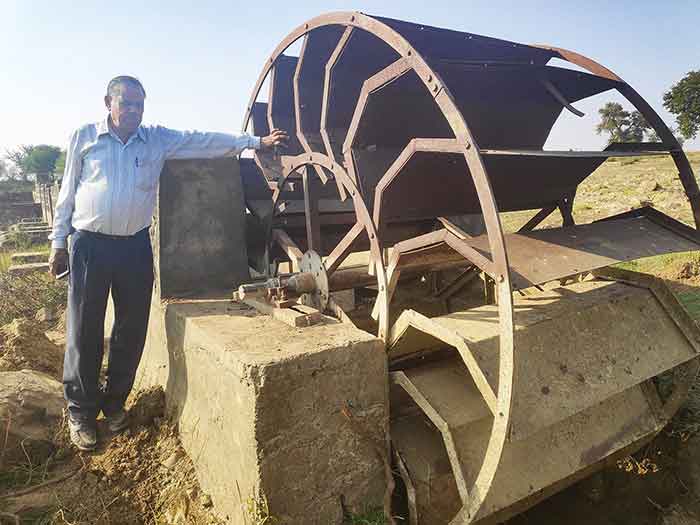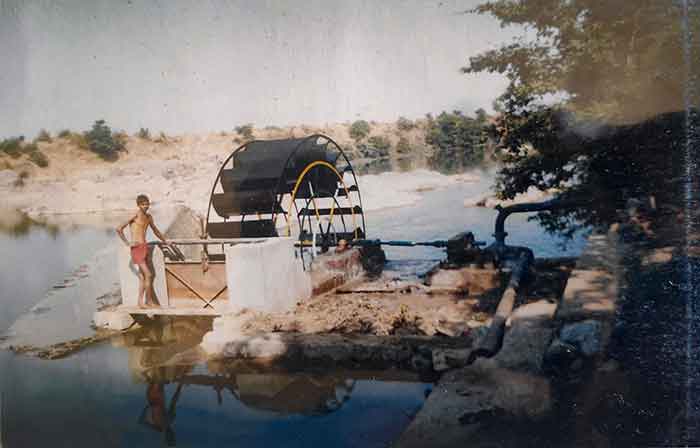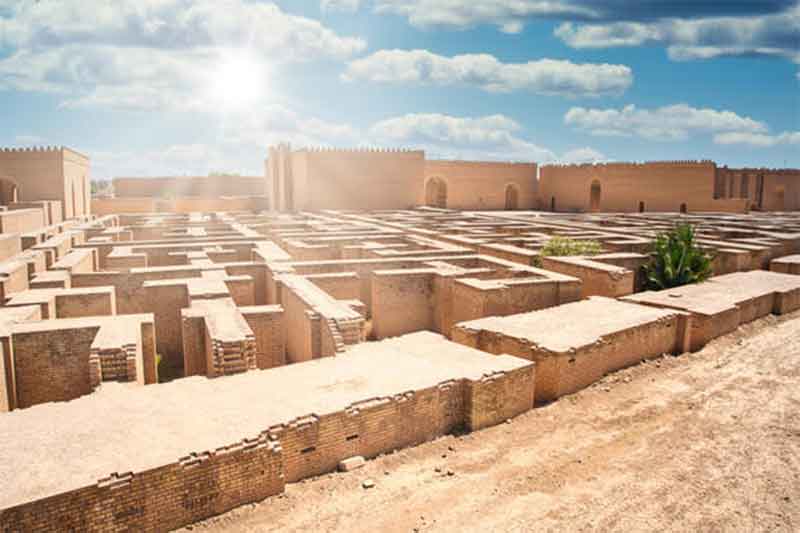Why An Innovation That Can Reduce Vast Amounts of Farmers’ Costs, Foreign Exchange and Greenhouse Gas Emissions Still Continue to Suffer From Official Neglect and Apathy After Repeated Official Confirmation of Its Great Value?

If an innovation can save billions of Rs. worth of diesel for farmers while at the same time cutting down on greenhouse gas emissions, then surely it should get top priority attention of the government spread. If its great utility has already been confirmed time and again by the governments’ own senior officials and experts, then the case for such rapid spread becomes even stronger.
So it is a great mystery why Mangal Turbine and its innovator farmer scientist Mangal Singh have been neglected so far by the government?
Mangal Singh grew up in a farmer family of Bundelkhand (Uttar Pradesh). As a teenager he used to see farmers of his village Bhailoni Lodh (in Lalitpur district) feeling very disheartened when they could not arrange diesel to lift water from streams to irrigate their fields.
Hence was imprinted an idea in the young mind to innovate a device which could lift water from streams (or small rivers, canals, nullahs etc.) without diesel (or electricity). After a lot of experimentation, he succeeded.
This invention was named Mangal Turbine. It was first demonstrated in 1987. Mangal Singh was 40 at that time. Later it was patented as “Mangal Water Wheel Turbine Machine” (Patent No. 177190 dated 13-11-1997) as per Government of India gazette Notification dated 30th November, 1998.
This technology is described by Mangal Singh in the following words, – “The water wheel turbine machine consists of a water wheel which is firmly mounted on a steel shaft and supports on two bearing blocks fixed on foundation supports. The shaft is coupled with a suitable gearbox through universal couplings for stepping up speed of rotation. Output shaft of the gear box is coupled on one end with a centrifugal pump for lifting water and the other end is mounted with a suitable pulley for deriving power for operating any machine…. The machine can also be used for several rural works such as operating atta chakki, sugarcane, crushing, threshing and winnowing, oil expelling, chaff cutting, etc.’’

The Ministry of Rural Development, Govt. of India, appointed the Maithani Committee to look into various aspects of the Mangal Turbine. This committee has commented. “”here are several variants of the Mangal Turbine but the standard device contains a water wheel of 2 meter diameter with 12 blades radially fixed to the rim. The shaft is coupled with a suitable gear box for stepping up of rotation to 1500-1800 rpm. The output shaft of the gear box is coupled on one end with a centrifugal pump for lifting water and the other end is mounted with a suitable pulley to operate any other machine like crusher, grinder etc. By using the energy of flowing water in a stream, Mangal Turbine enables lifting of water for irrigation/drinking purposes and also produces mechanical power that can be used for various other purposes…It is undoubtedly unparalleled in its simplicity and utility. Its cost benefit cannot be restricted to the extent of area irrigated and increase in production and income on account of that. Its benefits are multiple and multidimensional.”
B.K. Saha, former Chief Secretary, Govt. of Madhya Pradesh, has written about this device, “I made a detailed analysis of the economic viability of the ‘Wheel’ and its comparative advantage vis-a-vis alternative methods of pumping water from streams and small rivers for irrigation. The system is extremely cost effective even after taking into consideration the cost of the Stop Dam. Where the Stop Dam is already available the system is even more cost effective.
A report of the IIT-Delhi and Vigyan Shikhsha Kendra says, “Most significant aspect is that the entire system designed by Mangal Singh is easily fabricated in the village itself, using available material and local workmanship. Besides, it requires minimal maintenance compared to other types, expertise for maintenance is available in the village itself….Thus, Mangal turbine would prove a boon for fulfilling the energy need of irrigation, agro processing etc. in the rural sector wherever low water head exists in the rivers/Nallah…. ”
It has been estimated that if one unit of Mangal Turbine (MT) runs for 11 hours in a day, then it saves 44 litres of diesel in a day (on the basis of use of 4 litre diesel per hour by 25 HP diesel pump). Again assuming irrigation by MT on 190 days in a year, a single unit of MT can save 8360 litres (44×190) in a typical year. Over a lifetime of 15 years one unit of MT can potentially save 125400 litres (8360×15). In terms of greenhouse gas emissions (using assumption made in US Environment Protection Agency fact sheet) this works out to 335 tonnes. This estimate by Dr. Jai Shankar Singh is made on the basis of the assumption that one unit of MT will lift water from a stream which is equivalent to 25 HP diesel pump set and irrigate a command area of 50 ha.Reduction in diesel consumption and related GHG emissions can further increase significantly to the extent that the M.T. is used also (in addition to water lifting) for processing of various farm produce and other work.
Dr. Sarla Gopalan, Advisor Planning Commission who visited the Mangal Turbine installation site near Mangal Singh’s native village recommended after her visit, “This is an excellent example of energy conservation and needs to be popularized for the benefit of the people in various other locations where advantage of flowing water is available.’’
So far this account reads like a great success story, a classic case of flowering of the technical genius of a farmer youth who focused on a leading problem around him and solved it on the basis of local resources.
Then why did things are wrong. Unfortunately Mangal Singh was subjected to a lot of victimization and humiliation instead of encouragement which he richly deserved. A brief answer is provided by the government’s own Maithani Committee Report (2011-12)–“ Shri Mangal Singh was harassed and harmed in the process of implementation of the project. This has happened not only in connection with the project under reference which was the last sanctioned by CAPART (an organization of the Govt. to promote rural technology). It has happened in respect of all projects sanctioned by CAPART to Shri Mangal Singh earlier too.”
Further this report said, “There is no case against Shri Mangal Singh who needs to be compensated for the loses suffered due to advisory role played by CAPART in all the projects sanctioned to him simply because he did not ‘please’ them! Or because he was from humble background and rural area or because he was an anti corruption activist.”
Subsequently Mangal Singh won court cases to get modest monetary compensation for damage caused to him but he says this is hardly adequate for all the suffering caused to be over a period of our two decades. Above all, his creative work was hindered gain and again.
Mangal Singh is now 74 years old, and his health has suffered a lot due to consistent harassments. No more time should be lost in making best possible use of his special talents. He should get adequate facilities to install Mangal Turbine in various suitable places and to train several young rural technicians in this work.
The road map for the rapid spread of Mangal Turbine has been laid down by the Maithani Committee. This calls for re-installing MTs at places where these have been damaged after installation and to take up rapid spread of MTs in other places under various government programs.
The exact quotes from the Maithani Committee for this are being given below, and we should keep in mind that these recommendations of the government’s own committee have been completely neglected during last 8 years.
“There are some half a dozen sites where Mangal Turbines were once operating which were visited by many dignitaries and experts. But these assets have been damaged allegedly by some vested interests with the help of antisocial elements who did not like the innovation and particularly the low cost construction of check dams as the comparison was exposing their misdeeds. All these sites need to be restored with functioning Mangal Turbines. It will be of great help to the farmers of the area who are spending huge sums in operating large number of diesel engines for irrigation.
“…Mangal Turbine should be embraced by not only CAPART but all other agencies of the Government be it Ministry of Rural Development, Ministry of Agriculture, Ministry of Panchayati Raj, Ministry of Water Resources Development, NBARD, Horticulture Board, Rajiv Gandhi. Drinking Water Mission, Department of Alternate Energy Sources, Department of Land Resources, DRDA’s, PRIs etc: CAPART need to shed all reservations about Mangal Turbine and being pioneer in its promotion, should adopt it as a scheme to be promoted through NGOs. The Ministry of RD should also adopt it as a scheme to be implemented under Livelihood Mission. Agriculture Ministry should be in the fore front of its propagation under its NFSM, NHM, NWDPRA and RKVY. Similarly, Department of Land Resources can adopt it under IWMP and Ministry of Water Resources Development under AIBP and Minor Irrigation etc.”
Bharat Dogra is a free-lance journalist and author of recent book ‘Man over Machine’.
SIGN UP FOR COUNTERCURRENTS DAILY NEWSLETTER

















































